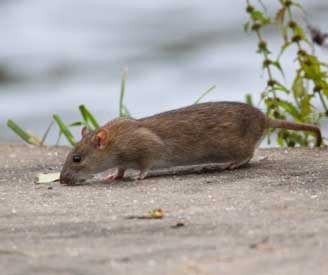Brown Rat
Rattus norvegicus
Description
They typically have coarse brown fur with a pale gray or grayish brown underside. They average 440 mm in length and weigh between 150 and 500 grams. They have a long, scaly, almost naked tail which is slightly shorter than the head and body. (Source)
Habitat
They prefers to live close to human due to available food sources. They inhabit basements and holes in foundations. They also live in marshy areas or fields. They are most likely to build nests on the ground, but have the ability to climb buildings.
Pathway of Introduction and Spread
They are native to Asia. They were introduced to the U.S. in 1775 in trade ships arriving from abroad. They are now found on every continent except except Antarctica.
They are located every U.S. state except Hawaii and Alaska. This is particularly due to being introduced in 1775 and their fast breeding rates.
Impacts
They cause destruction to property and spread diseases (including the bubonic plague, endemic typhus fever and ratbite fever). Females reach sexual maturity in two to five months and have litters with 4-22 individuals. They can have 3-12 litters per year.

